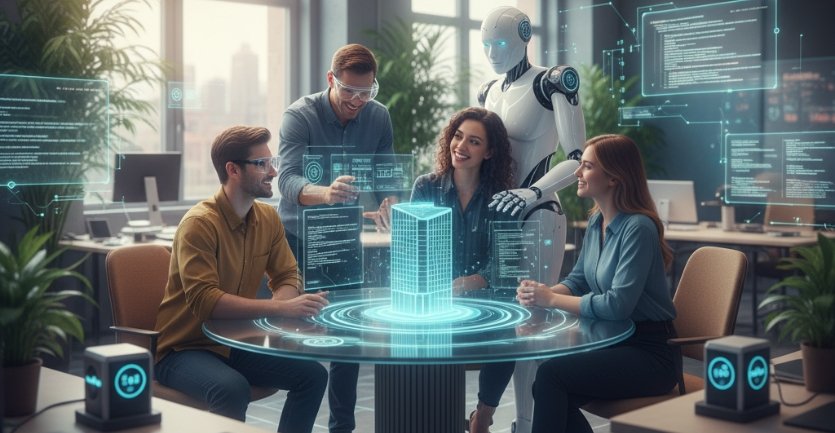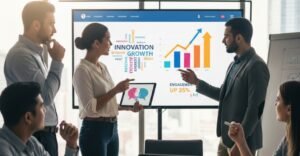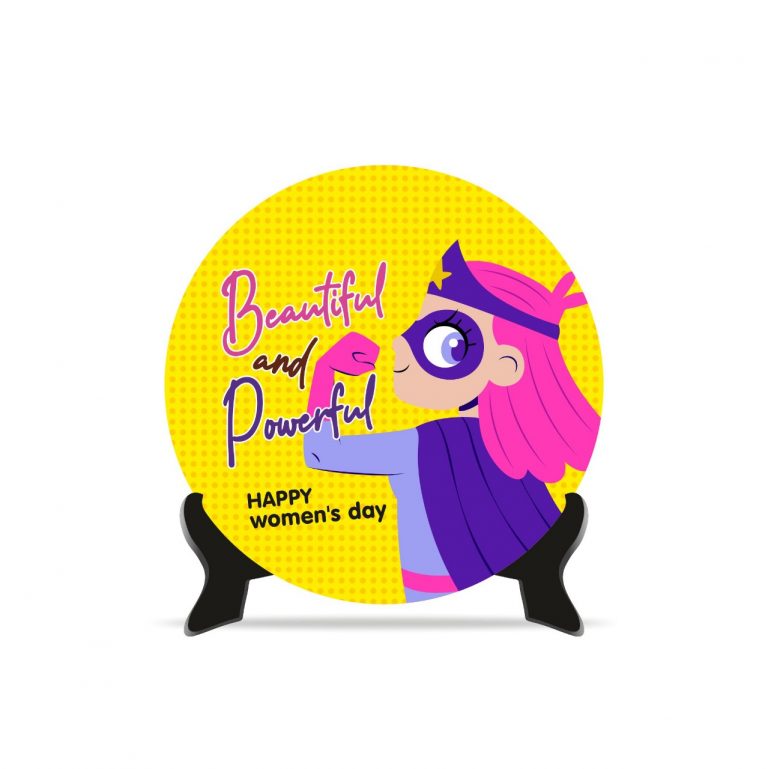The introduction of Artificial Intelligence (AI) is fundamentally reshaping the workplace. It is more than a technology upgrade. It is a profound shift in how we define productivity and culture.
For Human Resources leaders, the core challenge is not if they adopt AI. It is how they deploy it while preserving the essential human touch. The modern, amazing workplace recognizes that the most powerful outcomes happen when technology augments, but never erases, human judgment.
AI’s Swift Ascent in HR Operations
AI adoption is rapidly moving from experimentation to full-scale integration. Data confirms this technology is now a mainstream operational tool across HR functions.
Surveys indicate AI adoption among HR professionals is surging, with figures in some reports nearing 72% in 2025. This acceleration is driven by measurable efficiency gains. HR leaders report a significant 63% productivity boost.
Tangible reductions in administrative costs are also a key factor. Some companies see a 19% reduction in compliance overhead due to AI.
The core benefits are clear:
- Speed: AI Agent systems have reduced average time-to-hire by over 20%, streamlining talent acquisition.
- Efficiency: Automating tasks like benefits administration and initial screening frees HR staff.
- Data Insight: AI allows HR to move beyond annual workplace surveys. It enables continuous listening through real-time sentiment analysis. Forty-four percent of HR teams now use these tools to gauge employee morale instantly.
This automation is critical. It moves HR professionals out of repetitive data entry. It frees them up for high-value, people-focused work, which drives better employee experience.
The Undeniable Need for Human Oversight
Despite the soaring enthusiasm from the C-suite, employee sentiment remains cautious. This underscores the necessity of genuine human engagement. Workers aren’t rejecting AI, but they are demanding clear boundaries and ethical governance.
Employee trust in the technology hinges on one central factor: human oversight.
A majority of workers-60% in recent polls-identify human review as a key element for making AI a trusted technology. This preference for a human safety net is most pronounced in sensitive areas.
This includes:
- Conflict Resolution: A strong 78% of employees insist that conflict resolution and sensitive disciplinary actions should remain under human direction.
- Decision Fairness: A substantial 41% of employees prefer less AI involvement in critical HR decisions.
When AI is used to track performance or predict churn, a person must be responsible for interpreting the data.
They must deliver the necessary coaching, feedback, or decision. Technology can calculate, but only a human can empathize, mentor, and mediate.
Related Posts
Leadership Defines the Cultural Impact
The integration of AI poses an inherent risk to organizational culture. Without clear guidance, AI can create a fractured experience that leads to employee skepticism. Over a third of employees (37%) still feel that AI threatens their job security.
The distinction between a positive and a negative cultural impact is tied directly to the quality of Leadership in workplaces. Organizations with clear, strategic, and leadership-driven AI adoption see profoundly better outcomes.
In these transparent environments:
- Employee Engagement Soars: Sixty-two percent of employees report being fully engaged. This is the highest of any group surveyed.
- Positive Cultural Impact: A massive 79% of workers believe AI has positively impacted their workplace culture. This figure drops significantly in companies with haphazard adoption.
Leaders must define the narrative. They must make AI integration an exercise in organizational values, not just a pursuit of greater efficiency.
Building a Human-Centric Future
To build a truly amazing workplace, the AI strategy must be transparent, intentional, and centered on human development. The goal is to use AI to craft a better, more personalized experience for employees and customers.
Essential Strategies for Balance
- Prioritize Certification and Ethics: Establish internal certification programs. These should focus on managers who use AI tools in hiring and performance. This demonstrates commitment to ethical use and compliance.
- Redefine Employee Experience: Leverage AI to personalize growth. AI-assisted onboarding workflows, for example, have been shown to improve new hire satisfaction scores by 24%. This frees managers to focus on mentoring rather than administering.
- Strengthen Employer Branding: Communicate a clear vision. Organizations should explicitly state in their employer branding how AI is being used to enhance employee capabilities and create new opportunities. This counters the fear of job replacement and attracts top talent.
Ultimately, AI’s greatest service to HR may be forcing us to be more human. By automating the routine, it demands that Leadership in workplaces focus on what machines cannot replicate: emotional intelligence, critical thinking, meaningful feedback, and the empathetic foundation of a strong organizational culture.
The future of work is not AI versus the human; it is AI for the human.
Disclaimer: This article is for informational purposes only. While efforts are made to ensure accuracy, readers should verify information and seek professional advice as needed.









